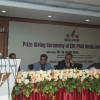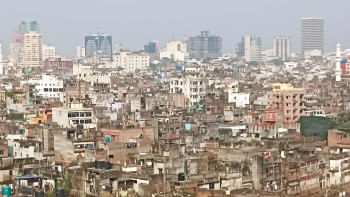Rare earth elements are the new drivers of global power

The recent back-and-forth between Washington and Beijing over rare earth minerals looks technical on the surface, but it points to a deeper shift in global leverage. The 17 metallic elements—vital for everything from electric motors to precision guidance systems—have quietly become strategic tools. Whoever controls them gains not only industrial advantage but diplomatic and economic influence.
For years China has quietly built a full rare-earth chain—from mining to magnet production—while others lagged. By 2024, it processed most of the roughly 44 million metric tonnes produced globally. But behind China's dominance lies a knot of politics. Myanmar's output comes from Kachin and Shan, where conflict economies feed militias and shadow contractors. In Africa, Namibia, Malawi and South Africa hold reserves but struggle with weak oversight, foreign rent capture and local anger over pollution. These states aren't passive; their politics decide whether resources become leverage or instability.
While rare earths' magnetic and conductive traits make them indispensable in green technologies and advanced weaponry, their extraction and refinement are dirty, technically hard and capital intensive. That creates an asymmetry: countries with refining capacity can weaponise access; those with only raw ore become junior partners, often trading sovereignty for investment. The control of strategic materials translates directly into bargaining power.
The politics of supply shape alliances, industrial strategy and regulatory choices across Asia, Europe and Africa. The modern push for net-zero and digitisation makes demand for rare earths structural. That creates incentives for states to pursue long-term industrial policy, secure recycling streams and sponsor substitution research. Yet democracies and centralised economies do this differently. China's state-directed approach achieved rapid vertical integration; liberal economies, wary of environmental backlash and private-sector caution, are still catching up. The result is strategic divergence in how societies accept risk, finance infrastructure and permit environmental disruption.
Economic statecraft such as export limits and subsidies now act as political signals, reshaping competitors' industrial plans, defence timelines, and negotiation strategies. On a very different note, China's refining dominance brings pollution backlash and strategic pushback through stockpiling, diversification, and recycling. Transitions open space for recyclers, substitutes, and new refiners, especially for developing states seeking to escape raw-export dependence.
The control of rare earths is not just about mines; it is about the whole value chain—geological surveying, separation chemistry, magnet fabrication, component design and end-of-life recovery. Whoever controls these nodes captures most of the value and most of the leverage. That explains why some Western firms still send semi-processed ores to Chinese plants: the cost calculus favours outsourcing until domestic capability is rebuilt. But rebuilding is expensive, slow and politically contested, especially where public opinion opposes mining's environmental footprint. That creates a paradox: the green transition that relies on rare earths can become politically toxic if communities face pollution and displacement.
Therefore, while states are funding recycling research, subsidising domestic refineries, and investing in partner countries' governance, they are also testing new trade rules and looking for substitutes. None of these moves is a silver bullet. Recycling reduces dependence but cannot meet immediate demand; substitutes can be resource- or performance-limited. Meanwhile, donor-driven governance reforms in resource-exporting countries often run up against local power structures that benefit from opacity.
A sober conclusion follows: rare earths sharpen rather than simplify geopolitics. They create new interdependencies that mix economics, security and ecology. The most dangerous scenario is not merely a single supplier cutting off exports, but a slow, systemic sclerosis where strategic mistrust multiplies transaction costs, fragments supply chains and makes technological diffusion uneven. Conversely, the best outcome requires pragmatic cooperation: shared standards for environmental performance, transparent contracts, joint recycling ventures, and investments that build local capacity rather than hollow it out.
It is worth mentioning that, global supply lines for rare earths run from Chinese inland hubs to coastal ports through the South China Sea and Strait of Malacca, and from overland corridors hauling ore from Myanmar's Kachin fields into Yunnan. They also include corridors from Mongolia and Central Asia to Chinese refineries, maritime routes carrying African consignments to Chinese and European ports, and transpacific lanes to Japan, South Korea and the United States. Each of these arteries is being securitised. The South China Sea and Malacca straits have seen stepped-up naval patrols and freedom-of-navigation assertions as states protect chokepoints; Myanmar's routes are militarised by junta forces and armed groups that control extraction; Chinese state firms and coast guard units fortify export nodes; Western navies and the US are expanding escorts and stockpiles; and private security. They are also investing in ports and securing diplomatic-military ties in the African corridors, and using export-licensing and sanctions layer to legalise restraints on shipments.
In short, rare earths have become a litmus test for 21st-century power—an issue where industrial policy, domestic politics in resource states, environmental limits and international strategy intersect. They reveal a new fact of statecraft: influence now arises from mastering invisible materials as much as from controlling territory. Which states adapt, by building clean, resilient supply chains and by addressing political and environmental grievances where ores are mined, will determine how advantage shifts in the decades ahead.
Syed Raiyan Amir is senior research associate at the KRF Center for Bangladesh and Global Affairs (CBGA). He can be reached at [email protected].
Views expressed in this article are the author's own.
Follow The Daily Star Opinion on Facebook for the latest opinions, commentaries, and analyses by experts and professionals. To contribute your article or letter to The Daily Star Opinion, see our guidelines for submission.

 For all latest news, follow The Daily Star's Google News channel.
For all latest news, follow The Daily Star's Google News channel. 










Comments